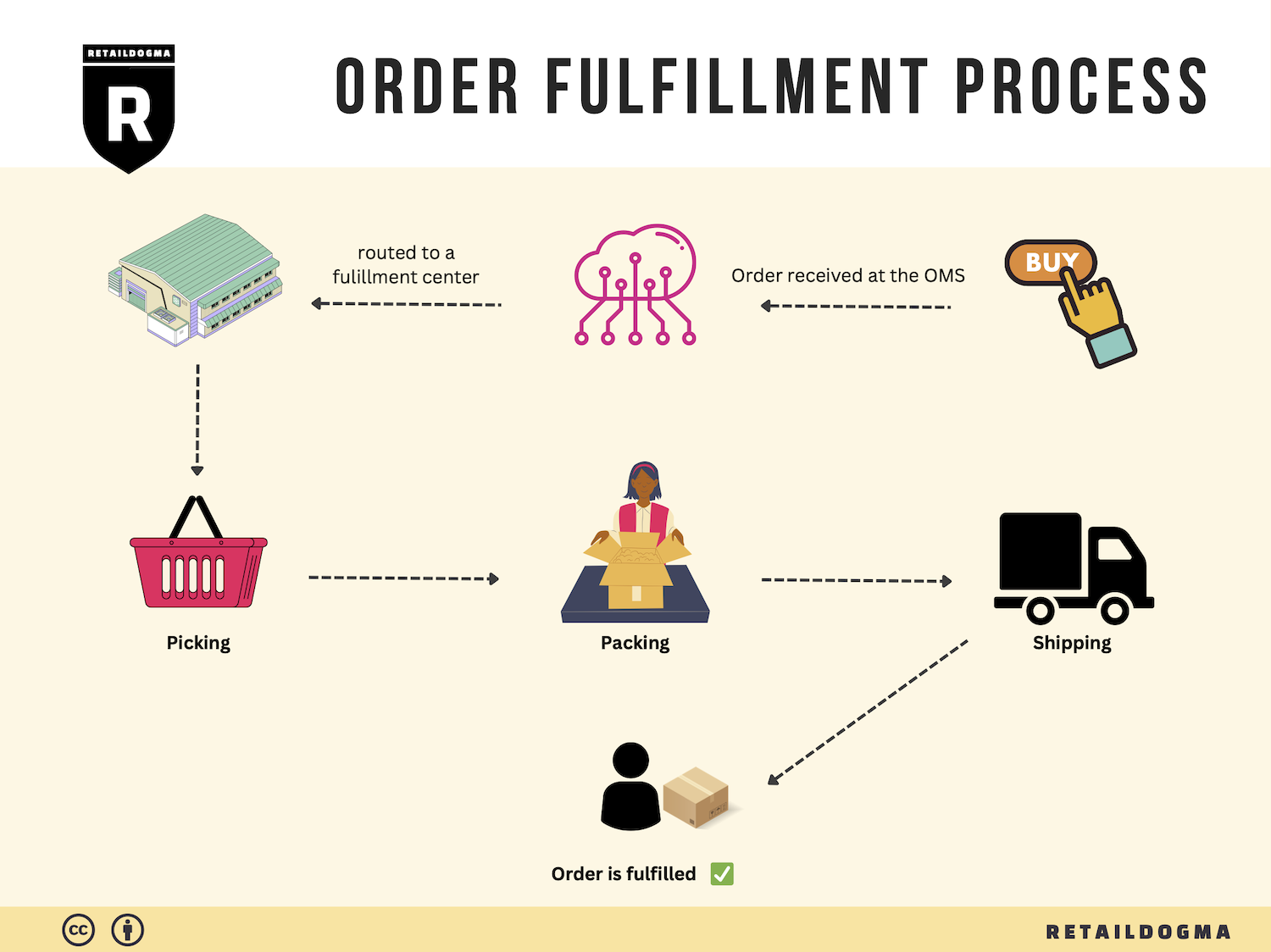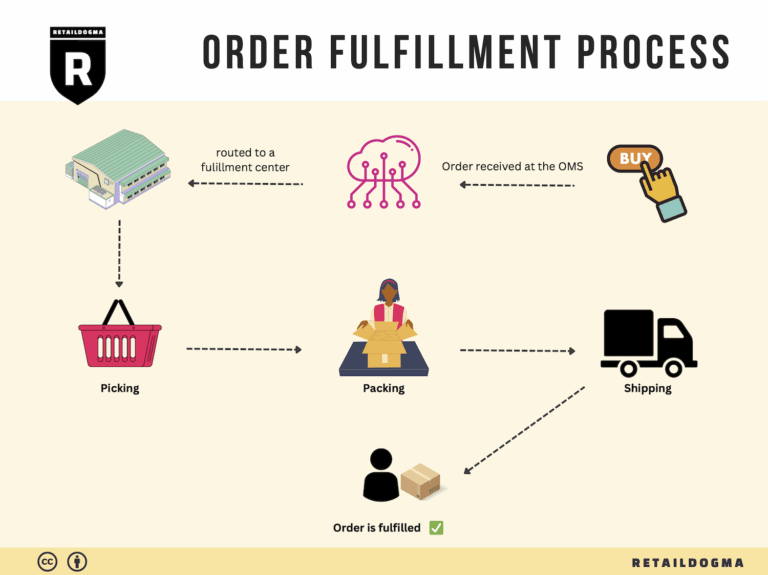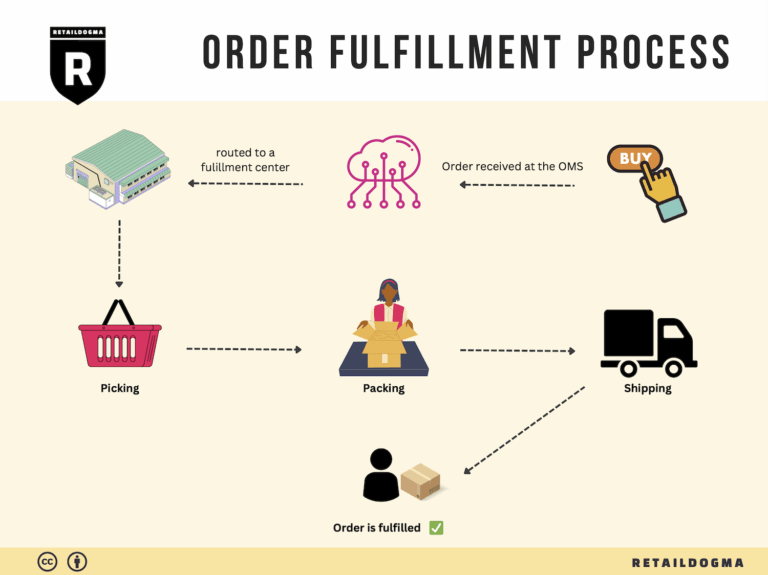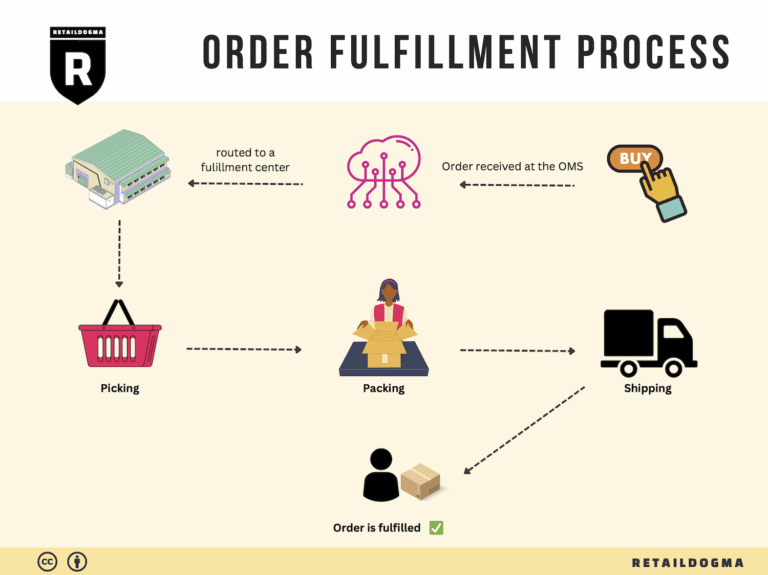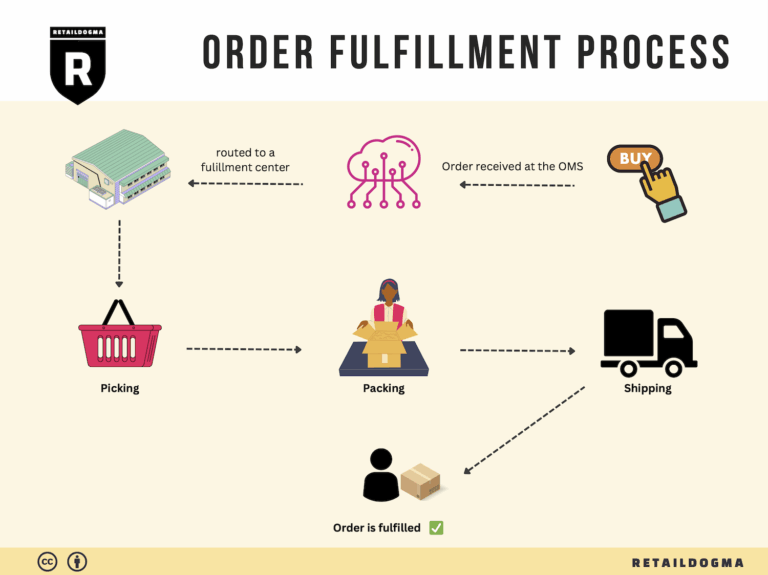What Is A Fulfillment Center? A Complete Guide (2025)
What is E-commerce Fulfillment? An Introduction for Growing Businesses
As an e-commerce business owner, you may find yourself at a crossroads: the excitement of growing sales is often overshadowed by the daunting task of packing and shipping orders. Managing these logistics can quickly become overwhelming, diverting your attention from what truly matters—growing your business. This is where e-commerce fulfillment comes into play.
Fulfillment, in its simplest form, is the process of getting a product from your warehouse or supplier to your customer’s doorstep. It encompasses various tasks including inventory management, order processing, packing, shipping, and returns handling. As your business scales, understanding the nuances of fulfillment becomes critical to maintaining customer satisfaction and operational efficiency.
In this guide, we will explore the different fulfillment models available to growing e-commerce businesses. You’ll learn about Third-Party Logistics (3PL) providers, which can handle storage, packing, and shipping on your behalf, and Fulfillment by Amazon (FBA), an attractive option for those looking to leverage Amazon’s vast distribution network. Each model offers distinct advantages and challenges, and knowing which to choose can significantly impact your business operations.
We will also delve into core fulfillment services that are essential for efficient operations. These include inventory management, real-time tracking, and returns processing, all designed to streamline your logistics and enhance the customer experience. Understanding these services will equip you to make informed decisions when selecting a fulfillment partner.
Choosing the right fulfillment partner is a crucial step that can influence your business’s scalability. We’ll provide insights on what to look for in a partner, including their technology capabilities, shipping options, and customer support services. This information will empower you to make a choice that aligns with your business goals.
Finally, we’ll address pricing considerations, helping you to understand the costs associated with various fulfillment models and services. Transparent pricing structures are vital in avoiding unexpected expenses that can eat into your margins.
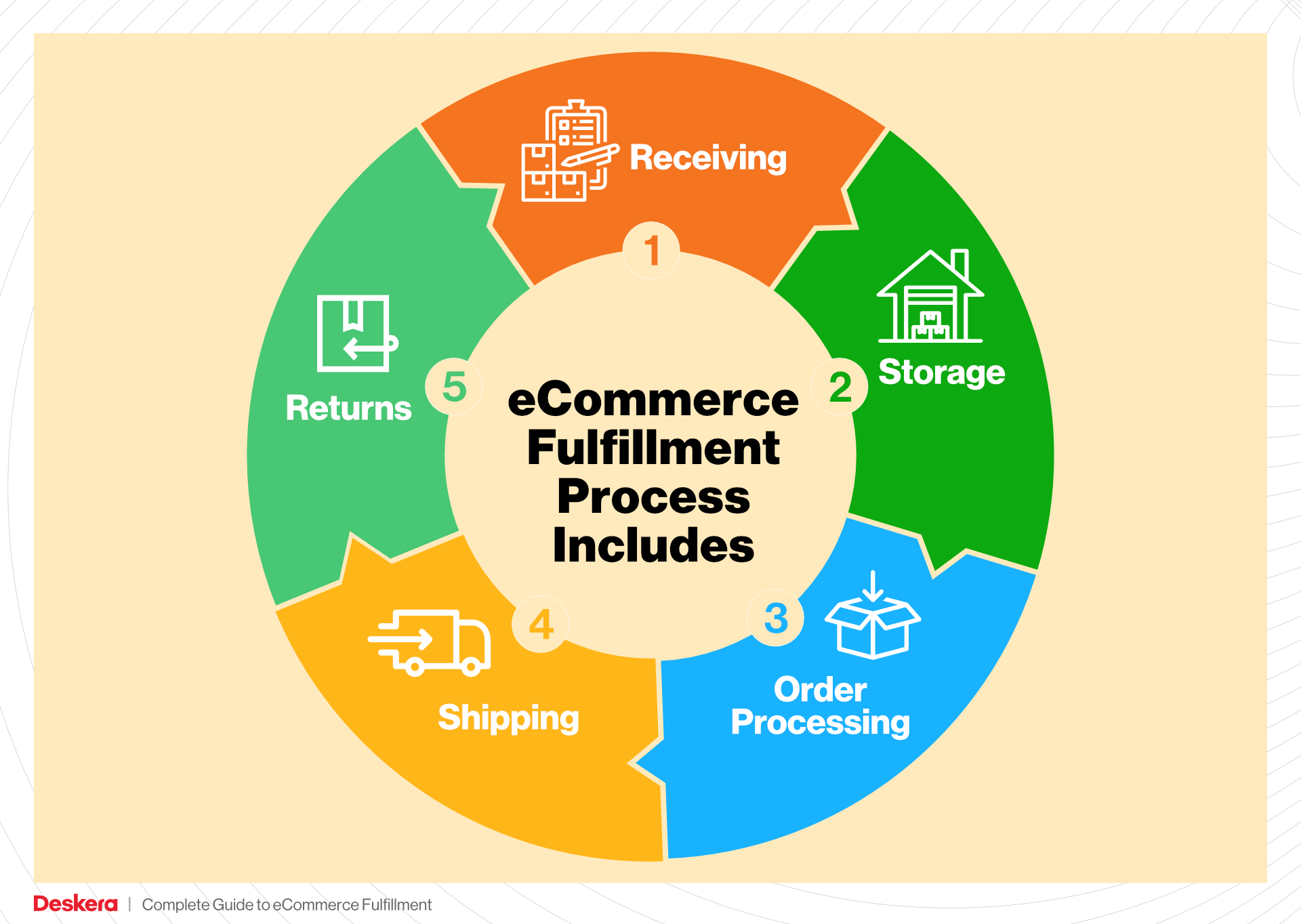
Our goal with this guide is to empower you, the growing business owner, to make smart, informed decisions about your logistics. With the right fulfillment strategy in place, you can focus on what you do best—delivering exceptional products and experiences to your customers.
What You’ll Learn In This Guide
- What is E-commerce Fulfillment? An Introduction for Growing Businesses
- The Order Fulfillment Process: From ‘Buy’ Button to Customer’s Door
- Comparing Fulfillment Models: In-House vs. 3PL vs. Dropshipping
- A Deep Dive into Amazon FBA: Pros, Cons, and Who It’s For
- Core Services Offered by Fulfillment Centers
- How to Choose a Fulfillment Partner: A 6-Point Checklist
- Understanding Fulfillment Pricing: A Breakdown of Common Fees
- Frequently Asked Questions (FAQs) about Fulfillment
- Conclusion: Is Outsourcing Fulfillment the Right Move for Your Business?
- Important Disclaimer
The Order Fulfillment Process: From ‘Buy’ Button to Customer’s Door
1. Receiving Inventory
The order fulfillment process begins with receiving inventory at the fulfillment center. When products arrive, they are checked against purchase orders to ensure the correct quantity and quality are received. This step is crucial because it sets the foundation for accurate inventory management and prevents stock discrepancies.
During this phase, each item is assigned a Stock Keeping Unit (SKU), a unique identifier that helps in tracking products throughout the supply chain. Accurate receiving helps prevent issues such as stockouts or overstock situations, which can directly affect customer satisfaction and operational efficiency.
Moreover, utilizing technology such as barcode scanners during receiving can significantly enhance the speed and accuracy of inventory checks. This not only minimizes human errors but also integrates seamlessly with inventory management systems, ensuring real-time updates on stock levels.
2. Warehouse Storage
Once the inventory is received and verified, it is moved to designated storage areas within the warehouse. Efficient warehouse storage is vital for maximizing space and improving retrieval times. This is where effective layout planning comes into play, utilizing various storage systems such as pallet racking or shelving that can accommodate different product sizes and types.
Proper organization within the storage area ensures that products are easy to locate when orders come in. This step often involves the use of inventory management software to keep track of product locations, which can help in reducing the time spent searching for items when orders are placed.
Additionally, employing a First-In-First-Out (FIFO) method is particularly important for perishable goods, such as chocolate, ensuring that older stock is sold before newer stock. This approach minimizes waste and maintains product quality.
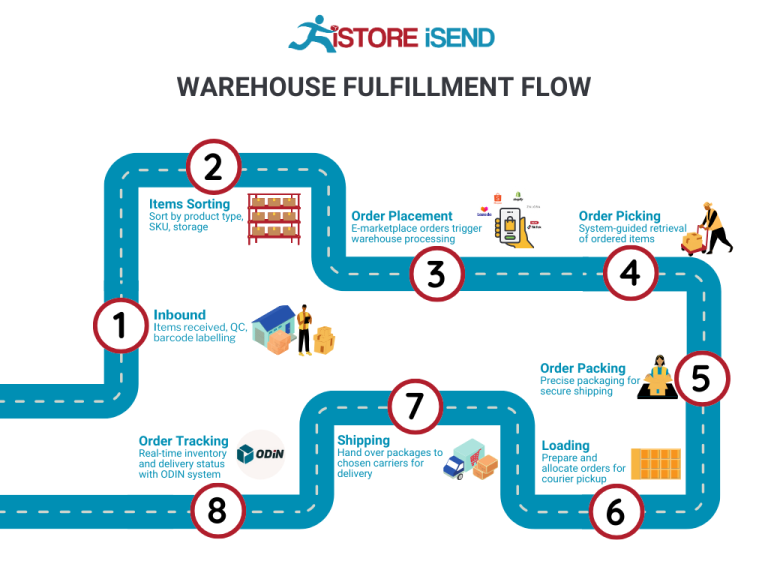
3. Order Picking
Order picking is the process of retrieving items from their storage locations to fulfill customer orders. This step is critical as it directly impacts order accuracy and efficiency. A common tool used in this process is the pick list, which outlines the items and their locations within the warehouse.
Different picking methods can be employed based on the scale of operations and order volume. For instance, batch picking can be used for high-volume orders, allowing workers to pick multiple orders simultaneously, while single-order picking may be more suitable for smaller operations.
The efficiency of this step can be greatly enhanced through technology, such as automated picking systems or mobile devices that guide workers through the warehouse. Optimizing this process reduces picking time, leading to quicker order fulfillment and improved customer satisfaction.
4. Order Packing
After items are picked, they proceed to the packing station. This step involves preparing the items for shipment, which includes selecting appropriate packaging materials, ensuring that items are securely packed, and labeling packages correctly. This is crucial not only for protecting products during transit but also for compliance with shipping regulations.
Effective packing can also reduce shipping costs, as choosing the right box size can prevent excess weight charges. Additionally, using packing slips that include order details helps in verifying that the correct items are included before sealing the package.
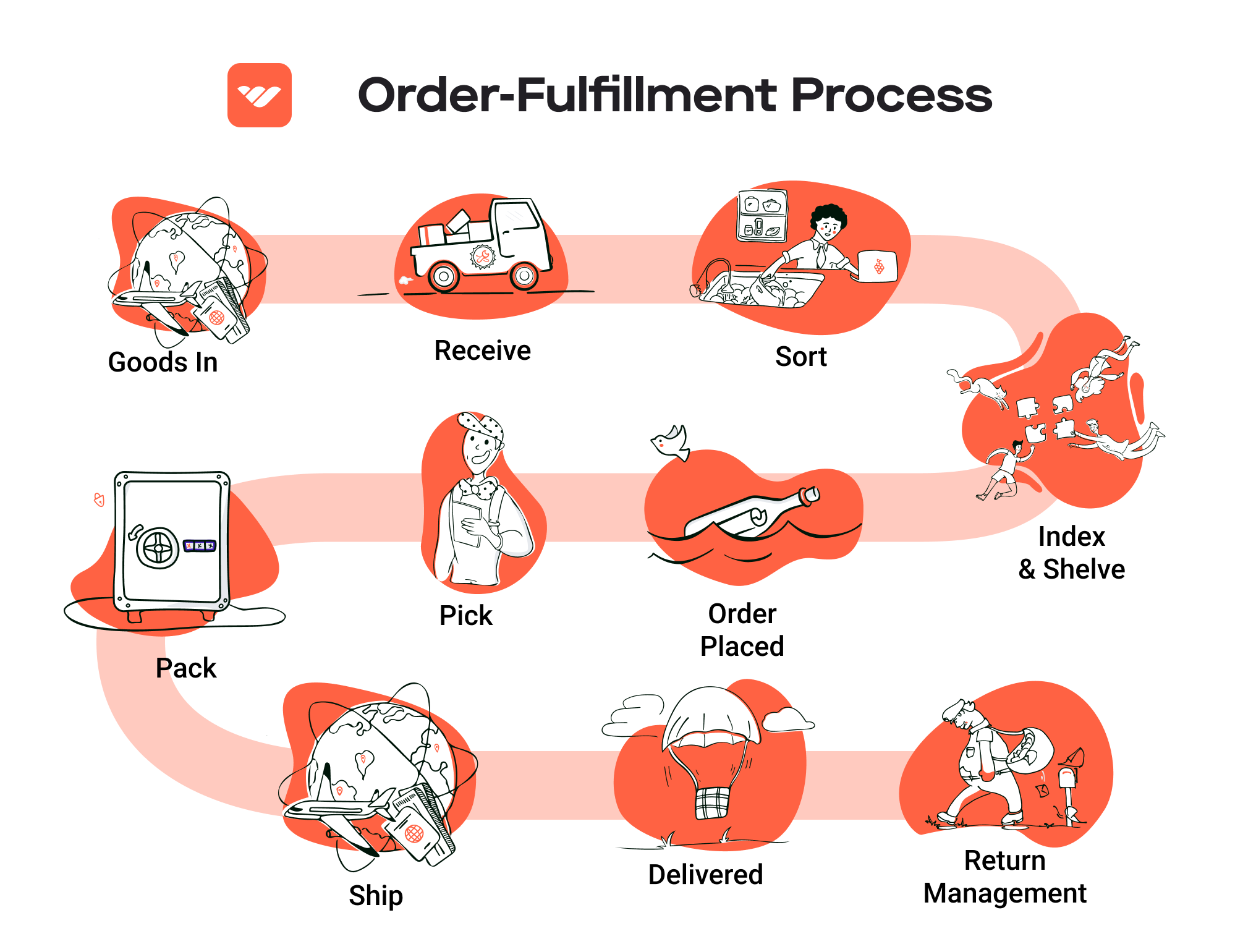
Incorporating branded packaging can enhance the customer experience, creating a memorable unboxing moment. This attention to detail can improve customer loyalty and encourage repeat purchases.
5. Shipping & Delivery
The final step in the order fulfillment process is shipping and delivery. Once packages are packed, they are handed over to shipping carriers for delivery to customers. This step is essential, as it determines how quickly customers receive their orders, impacting their overall satisfaction.
Utilizing a reliable shipping strategy involves choosing the right carriers, understanding shipping rates, and offering various delivery options to meet customer needs. Providing tracking information to customers is also important, as it enhances transparency and allows customers to monitor their orders in real-time.
Moreover, implementing a robust returns management process can streamline the handling of returns, further improving customer trust and satisfaction. Efficient shipping and delivery practices not only ensure that orders arrive on time but also help in building a positive brand reputation in the competitive e-commerce landscape.
By mastering these five steps—receiving inventory, warehouse storage, order picking, order packing, and shipping & delivery—e-commerce businesses can create a seamless order fulfillment process that enhances operational efficiency and elevates customer satisfaction.
Comparing Fulfillment Models: In-House vs. 3PL vs. Dropshipping
Fulfillment Model Comparison
| Model | Who Handles Inventory | Best For (Business Stage) | Key Advantage | Key Disadvantage |
|---|---|---|---|---|
| In-House Fulfillment | The business itself | Established businesses | Full control over inventory and operations | High overhead costs and resource intensity |
| Third-Party Logistics (3PL) | External logistics provider | Growth-stage businesses | Scalability and cost-effectiveness | Less control over the fulfillment process |
| Dropshipping | Supplier or manufacturer | Startups and small businesses | Low upfront investment and minimal risk | Lower profit margins and dependency on suppliers |
In-House Fulfillment
In-house fulfillment involves a company managing its own inventory, warehousing, and shipping processes. This model is best suited for established businesses that have the resources and infrastructure to handle logistics internally. One of the key advantages of in-house fulfillment is the full control it provides over inventory management and operations. Companies can customize their processes, enhance customer service, and ensure that quality standards are met consistently. However, this model also comes with significant disadvantages, including high overhead costs. Companies must invest in warehouse space, staffing, technology, and inventory management systems, which can be particularly burdensome for smaller operations. Additionally, the resource intensity required to maintain an in-house fulfillment operation can divert attention from core business activities, potentially stunting growth.
Third-Party Logistics (3PL)
Third-party logistics (3PL) involves outsourcing fulfillment operations to an external logistics provider. This model is particularly beneficial for growth-stage businesses that need to scale operations quickly without the burden of managing logistics themselves. The key advantage of 3PL is its scalability and cost-effectiveness. Businesses can leverage the expertise and infrastructure of 3PL providers, allowing them to focus on their core competencies such as marketing and product development. 3PL providers often have advanced technology and systems in place, which can enhance efficiency and accuracy in order processing. However, the main disadvantage is the potential loss of control over the fulfillment process. Companies may face challenges in maintaining service levels and quality standards, as they must rely on their 3PL partner to meet customer expectations. Furthermore, the integration of systems between the business and the 3PL provider can be complex and may require significant investment in technology.
Dropshipping
Dropshipping is a fulfillment model where the retailer does not hold inventory but instead transfers customer orders and shipment details directly to a supplier or manufacturer, who then ships the products directly to the customer. This model is ideal for startups and small businesses with limited capital, as it requires low upfront investment and minimal risk. Retailers can offer a wide range of products without the need to manage inventory or warehouse space, which significantly reduces overhead costs. However, dropshipping also has its drawbacks, particularly concerning profit margins. Retailers typically earn lower margins on dropshipped products compared to those they fulfill in-house, as they often pay a premium for the convenience of the service. Additionally, reliance on suppliers can lead to issues such as stockouts or delays in shipping, which can negatively impact customer satisfaction and brand reputation. Retailers must carefully select reliable suppliers and maintain strong communication to mitigate these risks.
Conclusion
Choosing the right fulfillment model is a critical decision for any e-commerce business. Each model—whether in-house fulfillment, 3PL, or dropshipping—offers distinct advantages and disadvantages that can significantly impact operational efficiency, customer satisfaction, and overall profitability. Established businesses may benefit from the control and customization of in-house fulfillment, while growth-stage companies might find 3PL to be a more scalable solution. Meanwhile, startups and small businesses can leverage the low-risk nature of dropshipping to enter the market without heavy financial commitments. Ultimately, the choice of fulfillment model should align with the company’s current stage, resources, and long-term strategic goals, ensuring a sustainable path to growth and success in the competitive e-commerce landscape.
A Deep Dive into Amazon FBA: Pros, Cons, and Who It’s For
Understanding Fulfillment by Amazon (FBA)
Fulfillment by Amazon (FBA) is a service offered by Amazon that allows businesses to store their products in Amazon’s fulfillment centers. When a customer places an order for a product, Amazon takes care of storage, packaging, and shipping, as well as customer service and returns. This service is particularly attractive to e-commerce businesses looking to scale their operations without the burden of managing logistics.
How FBA Works
-
Sign Up and Setup: To start using FBA, sellers need to create an Amazon seller account and enroll in the FBA program. This involves setting up product listings and choosing which products to fulfill via FBA.
-
Shipping Inventory: Sellers send their inventory to Amazon’s fulfillment centers. Amazon provides guidelines on how to prepare and package items for shipment to ensure they meet their standards.
-
Storage: Once the inventory arrives at the fulfillment center, Amazon stores it until it is sold. The storage fees depend on the amount of space your products occupy and the time of year, with higher fees typically during peak seasons.
-
Order Fulfillment: When a customer orders a product, Amazon handles the picking, packing, and shipping. FBA products are eligible for Amazon Prime and are listed with the “Fulfilled by Amazon” logo, which increases visibility.
-
Customer Service and Returns: Amazon manages customer inquiries and processes returns, alleviating sellers from these responsibilities.
Pros of Using FBA
-
Prime Eligibility: One of the most significant advantages of FBA is that products become eligible for Amazon Prime. This can lead to increased sales, as Prime members tend to prefer products with free two-day shipping.
-
Customer Trust: By using FBA, sellers benefit from Amazon’s trusted brand reputation. Customers are more likely to purchase products fulfilled by Amazon, knowing they will receive reliable service.
-
Multi-Channel Fulfillment: FBA isn’t limited to just Amazon sales. Sellers can use FBA to fulfill orders from their own websites or other marketplaces, allowing them to streamline their logistics across various channels.
-
Scalability: FBA allows sellers to scale their business efficiently. With Amazon handling logistics, sellers can focus on other aspects of their business, such as marketing and product development.
-
Easy Returns Management: Amazon’s return policy is straightforward and customer-friendly, which can enhance customer satisfaction and loyalty.
Cons of Using FBA
-
High Fees: While FBA can save time and effort, it comes at a cost. Sellers must pay for storage and fulfillment fees, which can add up, especially for slow-moving products. It’s crucial to analyze whether the increased sales from FBA outweigh these costs.
-
Strict Inventory Rules: Amazon has strict rules regarding inventory management. Sellers must ensure they comply with these rules, including maintaining appropriate stock levels and adhering to packaging guidelines. Failure to comply can result in additional fees or account suspension.
-
Commingling Risks: When products are commingled, Amazon may mix a seller’s inventory with that of other sellers. This can create challenges if there are quality issues or returns, as it complicates tracking the source of the products.
-
Loss of Control: By outsourcing fulfillment to Amazon, sellers lose some control over the customer experience, particularly in terms of packaging and branding. This can impact brand perception, especially for businesses that prioritize a unique unboxing experience.
-
Potential for Stockouts: If a seller’s inventory runs low, they may miss out on sales opportunities. Effective inventory management is critical to avoid stockouts, which can be challenging when relying on FBA.
Who is FBA Best For?
FBA is particularly well-suited for:
-
Small to Medium-Sized Businesses: These businesses often lack the resources to manage their own fulfillment centers. FBA allows them to leverage Amazon’s logistics network without significant upfront investment.
-
E-commerce Entrepreneurs: Individuals or startups looking to enter the e-commerce space can benefit from the ease of use and scalability that FBA offers. It allows them to focus on growing their business rather than managing logistics.
-
Sellers with High Sales Volume: Businesses that can maintain high sales volumes can benefit from FBA, as the fulfillment fees may be offset by increased sales and the ability to offer Prime shipping.
-
Brands Looking to Expand Reach: Companies aiming to increase their visibility and reach a broader audience can leverage FBA’s infrastructure to enhance their distribution capabilities.
-
Businesses with Seasonal Products: Companies that experience seasonal fluctuations in demand can take advantage of FBA’s flexibility, allowing them to scale their operations up or down as needed.
In conclusion, Fulfillment by Amazon can be a powerful tool for e-commerce businesses seeking to streamline their logistics and enhance customer satisfaction. However, it’s essential to weigh the pros and cons carefully and assess whether FBA aligns with your business goals and operational capabilities. By understanding how FBA works and its implications, businesses can make informed decisions about their fulfillment strategies.
Core Services Offered by Fulfillment Centers
Inventory Management & Warehousing
Inventory management and warehousing are foundational services provided by fulfillment centers, ensuring that e-commerce businesses maintain optimal stock levels while minimizing costs. Fulfillment centers utilize sophisticated inventory management systems that track stock levels in real-time, allowing businesses to make informed decisions regarding purchasing and restocking.
The benefits of effective inventory management are substantial. First, it helps prevent stockouts, which can lead to lost sales and dissatisfied customers. By maintaining accurate inventory counts and forecasts, businesses can plan their purchasing strategies better, aligning them with demand trends. Moreover, efficient warehousing solutions minimize storage costs through strategic space utilization, which is particularly crucial for businesses dealing with perishable goods, like those managed in temperature-controlled environments such as Hershey’s Annville Fulfillment Center.
Additionally, advanced technology in inventory management enables businesses to analyze sales data, identify slow-moving items, and implement promotional strategies to clear out excess stock. This proactive approach not only enhances cash flow but also allows for better space management within the warehouse.
Pick and Pack Services
Pick and pack services represent a critical component of the fulfillment process, where items are selected (picked) from inventory and packaged (packed) for shipment to customers. Fulfillment centers employ efficient workflows to ensure that orders are filled quickly and accurately, leveraging technology such as barcode scanning and automated inventory systems.
The primary benefit of pick and pack services is the speed of order fulfillment. In today’s e-commerce landscape, customers expect fast shipping, and a well-organized pick and pack operation can significantly reduce order processing times. This responsiveness enhances customer satisfaction and loyalty, which are vital for repeat business.
Moreover, fulfillment centers often offer customizable packaging options that allow businesses to create a branded unboxing experience for their customers. This attention to detail can set a brand apart from competitors and foster a stronger emotional connection with customers. By outsourcing pick and pack services, e-commerce businesses can also focus on core activities such as marketing and product development, rather than the logistics of order fulfillment.
Kitting and Assembly
Kitting and assembly services involve the grouping of multiple products into a single package or kit, which is often done before shipping. This service is particularly valuable for businesses that sell products that are frequently purchased together or require assembly before reaching the customer, such as gift baskets or DIY kits.
The advantage of kitting and assembly is that it simplifies the purchasing process for customers, offering them a convenient way to buy related items in one package. This can lead to increased average order values and higher customer satisfaction as consumers appreciate the ease of finding complementary products.
Additionally, kitting can streamline the fulfillment process. Instead of picking individual items for each order, fulfillment centers can prepare kits in advance, reducing the time spent on order processing. This efficiency allows e-commerce businesses to respond more quickly to customer demand and adapt to seasonal trends, ultimately improving their overall operational agility.
Returns Management (Reverse Logistics)
Returns management, or reverse logistics, refers to the process of handling returned products from customers. A well-structured returns management service is essential for e-commerce businesses, as it directly impacts customer satisfaction and retention. Fulfillment centers can efficiently manage returns by inspecting, restocking, or recycling returned items, depending on their condition.
The benefits of effective returns management are multifaceted. First, a streamlined return process enhances customer trust and satisfaction, as consumers are more likely to make purchases when they know they can return items easily. This is particularly important in e-commerce, where customers cannot physically inspect products before purchase.
Moreover, efficient returns management can reduce costs associated with handling returns. Fulfillment centers can employ data analytics to identify common reasons for returns, allowing businesses to make informed adjustments to their product offerings or descriptions. This proactive approach can lead to a decrease in return rates over time, ultimately boosting profitability.
In addition, fulfillment centers often offer services to refurbish or repackage returned items for resale, minimizing losses and maximizing the lifecycle of products. This capability can be especially beneficial for businesses dealing with seasonal or trendy products, where inventory turnover is crucial.
By utilizing the core services of fulfillment centers, e-commerce businesses can enhance their operational efficiency, improve customer satisfaction, and ultimately scale their logistics and sales capabilities. The strategic partnership with a fulfillment center can provide a competitive edge, allowing businesses to focus on growth while ensuring that their logistics operations run smoothly.
How to Choose a Fulfillment Partner: A 6-Point Checklist
Location & Warehouse Network
Importance: The location of your fulfillment partner’s warehouses can significantly impact shipping times and costs. A partner with strategically located warehouses can ensure faster delivery to your customers, which is crucial for maintaining high customer satisfaction and competitive advantage.
Questions to Ask:
– Where are your warehouses located, and how does this align with my target customer base?
– What is your average shipping time to my key markets?
– How do you handle shipping to international customers, if applicable?
Technology & Integrations
Importance: In today’s digital landscape, technology plays a vital role in efficient supply chain management. A fulfillment partner with advanced technology can offer real-time inventory tracking, automated order processing, and seamless integration with your existing e-commerce platforms. This reduces manual errors and enhances operational efficiency.
Questions to Ask:
– What technology platforms do you use for inventory management and order processing?
– Can your system integrate with my e-commerce platform (e.g., Shopify, WooCommerce)?
– Do you offer real-time tracking for shipments, and how is this communicated to customers?
Specializations (e.g., Cold Storage, Oversized Items)
Importance: Different products have different storage and handling requirements. If your business involves perishable goods, fragile items, or oversized products, it’s essential to partner with a fulfillment center that specializes in these areas. This ensures that your products are handled appropriately, maintaining quality and compliance with regulations.
Questions to Ask:
– What specific types of products do you specialize in fulfilling?
– Do you have the capabilities to handle my product requirements, such as cold storage or oversized items?
– How do you ensure compliance with safety and quality standards for specialized products?
Scalability & Capacity
Importance: As your business grows, your fulfillment needs will change. A partner that can scale with you is critical to avoid disruptions in service. This includes having enough capacity to handle spikes in order volume, especially during peak seasons or promotional events.
Questions to Ask:
– How do you handle seasonal fluctuations in order volume?
– What is your maximum capacity for storage and order fulfillment?
– Can you provide examples of how you have scaled operations for other clients?
Pricing and Contracts
Importance: Understanding the pricing structure and contract terms is vital to ensure that you are getting value for your investment. Look for transparency in pricing to avoid hidden fees that could impact your bottom line. Additionally, flexible contract terms can provide you with the agility needed to adapt to changing business conditions.
Questions to Ask:
– Can you provide a detailed breakdown of your pricing model, including storage, picking, packing, and shipping costs?
– Are there any additional fees I should be aware of?
– What are the terms of the contract, and is there flexibility for adjustments based on my business needs?
Customer Support & Reviews
Importance: Effective customer support is essential for resolving issues quickly and maintaining a smooth operation. A partner with strong customer service will provide you with the support you need to address any challenges that arise. Additionally, researching customer reviews can give you insights into the partner’s reputation and reliability.
Questions to Ask:
– What kind of customer support do you offer (e.g., phone, email, chat)?
– How do you handle issues or complaints that may arise during the fulfillment process?
– Can you provide references or case studies from current or past clients?
Conclusion
Choosing the right fulfillment partner is a critical decision that can impact your e-commerce business’s efficiency and customer satisfaction. By using this checklist, you can evaluate potential partners based on their location, technology capabilities, specializations, scalability, pricing, and customer support. Taking the time to ask these essential questions will help you find a fulfillment partner that aligns with your business goals and supports your growth strategy.
Understanding Fulfillment Pricing: A Breakdown of Common Fees
Initial Setup Fees
Initial setup fees are one-time charges incurred when you first engage a fulfillment center. These fees can cover a variety of services, including the integration of your e-commerce platform with the fulfillment center’s system, initial inventory management, and any necessary account setup. The costs can vary significantly based on the complexity of your operations and the technology used. Typically, you might expect to pay anywhere from a few hundred to several thousand dollars.
When calculating these fees, fulfillment centers may consider factors such as:
- Integration complexity: More complex integrations with multiple e-commerce platforms or custom APIs will generally incur higher costs.
- Inventory onboarding: The process of entering your products into their system can vary in price, especially if bulk inventory needs to be processed.
- Training: Some centers offer training sessions for your staff, which could be included in the setup fee or charged separately.
Receiving Fees
Receiving fees are charged when your inventory arrives at the fulfillment center. This fee typically covers the labor and equipment costs associated with unloading, inspecting, and entering the inventory into the system. The fee is usually calculated on a per-pallet or per-box basis.
Factors influencing receiving fees include:
- Volume: Larger shipments may benefit from lower per-unit costs due to economies of scale.
- Complexity of the received items: Special handling requirements (like temperature control for sensitive items) can increase the fee.
- Inspection needs: If your products require detailed inspections upon arrival, expect additional charges.
Storage Fees (per pallet/bin)
Storage fees are charged for the space your inventory occupies within the fulfillment center. These fees can be calculated on a monthly basis and are often charged per pallet or bin. Storage fees vary based on the size of your products and the total amount of inventory you have on hand.
Key considerations for storage fees include:
- Duration: Longer storage times can lead to increased costs, especially if your inventory turnover rate is low.
- Product size and weight: Larger or heavier items may incur higher storage fees.
- Seasonality: Some fulfillment centers may offer discounted rates during off-peak times or increase fees during peak seasons (like the holiday rush).
Pick & Pack Fees (per item/order)
Pick and pack fees are charged for the process of selecting items from storage, packing them for shipment, and preparing them for delivery. This fee is generally calculated per item or per order, depending on the fulfillment center’s pricing structure.
Factors that affect pick and pack fees include:
- Order complexity: Orders with multiple items may incur higher fees due to the additional labor involved.
- Packaging requirements: Special packaging (e.g., gift wrapping or branded packaging) can add to the costs.
- Automation: Some fulfillment centers utilize automated systems, which can reduce labor costs and lower fees for high-volume clients.
Shipping Fees
Shipping fees are one of the most variable costs associated with fulfillment. These fees cover the cost of transporting your products to customers and can fluctuate based on several factors, including:
- Carrier choice: Different shipping carriers (e.g., FedEx, UPS, USPS) have varying rates, and some fulfillment centers may offer discounted rates based on volume.
- Shipping speed: Expedited shipping options will generally cost more than standard shipping.
- Destination: Shipping to remote locations can increase costs significantly.
Tips for Getting an Accurate Quote
When seeking a quote from a fulfillment center, consider the following tips to ensure accuracy and transparency:
-
Provide Detailed Information: Clearly outline your product dimensions, weight, and any special handling requirements. Include expected order volumes and seasonal fluctuations.
-
Ask for Itemized Pricing: Request a breakdown of all potential fees (setup, receiving, storage, pick & pack, and shipping) to understand the complete cost structure.
-
Inquire About Discounts: Some fulfillment centers offer volume-based discounts or special promotions. Be sure to ask about these options.
-
Clarify Terms and Conditions: Understand the terms associated with storage and handling, including any penalties for long-term storage or unexpected surcharges.
-
Evaluate Technology Integration: If you’re using specific e-commerce platforms, ensure the fulfillment center can seamlessly integrate with your systems to avoid additional costs.
By following these guidelines, you can make informed decisions that align with your e-commerce business’s growth strategies and budgetary constraints.
Frequently Asked Questions (FAQs) about Fulfillment
1. What is the Hershey Annville Fulfillment Center?
The Hershey Annville Fulfillment Center is a state-of-the-art facility located in Annville, Pennsylvania. Spanning 819,200 square feet, it is designed for the processing and storage of chocolate products, ensuring they are stored in optimal conditions with a controlled temperature of 60 degrees Fahrenheit and a maximum humidity of 50%. This facility employs advanced technology for real-time product tracking and digital inspections, supporting efficient operations.
2. How does the Hershey Annville Fulfillment Center support e-commerce businesses?
The Annville Fulfillment Center enhances e-commerce operations by providing a high-capacity, technologically advanced facility that can efficiently handle large volumes of orders. Its digital integration allows for real-time inventory management and order tracking, which is crucial for businesses aiming to scale their online sales and improve customer satisfaction.
3. What is the difference between a warehouse and a fulfillment center?
A warehouse is primarily used for storing goods, while a fulfillment center focuses on processing and shipping orders directly to customers. Fulfillment centers are equipped with technology and systems that facilitate order picking, packing, and shipping, often integrating with e-commerce platforms to streamline the order fulfillment process.
4. What services are offered at the Hershey Annville Fulfillment Center?
The facility offers a range of services including storage, order processing, packing, and shipping of Hershey products. It employs advanced technology for inventory management and product tracking, ensuring that orders are fulfilled accurately and efficiently. Additionally, the facility supports seasonal demand with the capacity to handle increased order volumes during peak times.
5. How much do fulfillment services cost?
Fulfillment service costs can vary widely based on factors such as order volume, storage needs, and the complexity of services required. Typically, costs may include warehousing fees, picking and packing fees, shipping costs, and any additional services like kitting or assembly. It’s advisable for businesses to request quotes from fulfillment centers to understand pricing structures specific to their needs.
6. What are the benefits of using the Hershey Annville Fulfillment Center for my business?
Utilizing the Hershey Annville Fulfillment Center offers numerous benefits including access to advanced technology for efficient order processing, the ability to scale operations quickly, and the assurance of high-quality storage conditions for sensitive products like chocolate. Additionally, the facility’s strategic location can reduce shipping times and costs for businesses targeting the East Coast market.
7. How does the Annville Fulfillment Center ensure product quality?
The facility maintains strict environmental controls to protect product quality, including temperature and humidity regulation. With a dedicated processing area designed specifically for food-grade products, Hershey ensures that all items are stored and handled according to industry standards. Regular inspections and compliance with safety protocols further enhance product integrity.
8. What is a 3PL, and how does it relate to the Hershey Annville Fulfillment Center?
A 3PL, or third-party logistics provider, offers outsourced logistics services including warehousing, transportation, and fulfillment. The Hershey Annville Fulfillment Center functions as a 3PL for Hershey’s products, managing the supply chain from storage to delivery, allowing businesses to focus on core operations while benefiting from specialized logistics expertise.
9. What technology is used at the Hershey Annville Fulfillment Center?
The Annville facility employs high-tech systems for inventory management and order tracking, enabling real-time visibility into stock levels and order statuses. This integration of digital tools helps streamline operations, reduce errors, and enhance overall efficiency in the fulfillment process.
10. How can my business partner with the Hershey Annville Fulfillment Center?
Businesses interested in partnering with the Hershey Annville Fulfillment Center should reach out directly to Hershey’s supply chain management team. They can provide insights into partnership opportunities, service offerings, and how to integrate your business operations with their fulfillment processes. Engaging in discussions about your specific needs will help determine the best path forward.
Conclusion: Is Outsourcing Fulfillment the Right Move for Your Business?
Evaluating the Benefits of Outsourcing Fulfillment
As e-commerce businesses strive to scale and meet growing consumer demands, outsourcing fulfillment can be a strategic move that offers numerous advantages. One of the primary benefits is time savings. By partnering with a dedicated fulfillment service, business owners can offload the complexities of inventory management, order processing, and shipping logistics. This allows them to focus on core activities such as marketing, product development, and customer engagement, ultimately driving growth.
Another significant advantage is scalability. A well-chosen fulfillment partner can adapt to fluctuating order volumes, enabling businesses to efficiently manage peak seasons without the need for substantial investments in infrastructure or staffing. This flexibility is crucial in today’s fast-paced market, where consumer preferences can change rapidly.
Additionally, outsourcing fulfillment grants access to specialized expertise. Fulfillment centers, like the Hershey Annville facility, are equipped with advanced technology and seasoned professionals who understand the intricacies of logistics. Their experience can enhance operational efficiency, reduce errors, and improve overall customer satisfaction through timely deliveries and accurate order processing.
However, selecting the right fulfillment partner is paramount to realizing these benefits. A poor choice can lead to disruptions, dissatisfaction, and ultimately, a negative impact on your brand. Therefore, conducting thorough due diligence—evaluating potential partners based on their capabilities, technology, and alignment with your business goals—is essential for sustainable growth.
Next Steps for Your Business
To determine if outsourcing fulfillment is the right step for your business, consider conducting a comprehensive audit of your current shipping and logistics processes. Assess your operational challenges, customer service levels, and scalability needs. This evaluation will provide clarity on whether a fulfillment partner can enhance your efficiency and support your growth objectives. Embrace the opportunity to streamline your operations and position your business for success in the competitive e-commerce landscape.
Important Disclaimer
⚠️ Important Disclaimer
The information in this guide is for educational purposes. Fulfillment services, pricing, and platform features change frequently. Always conduct your own due diligence and consult with providers directly before making business decisions.
